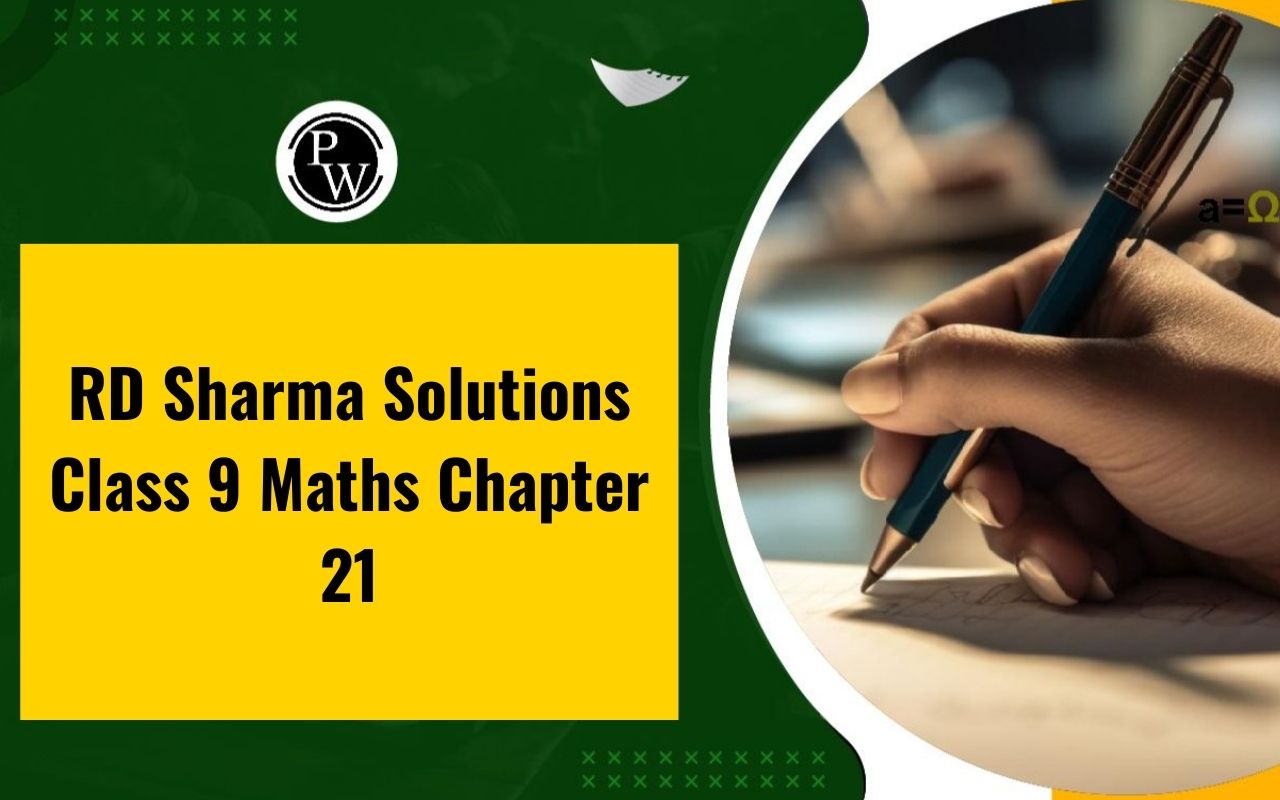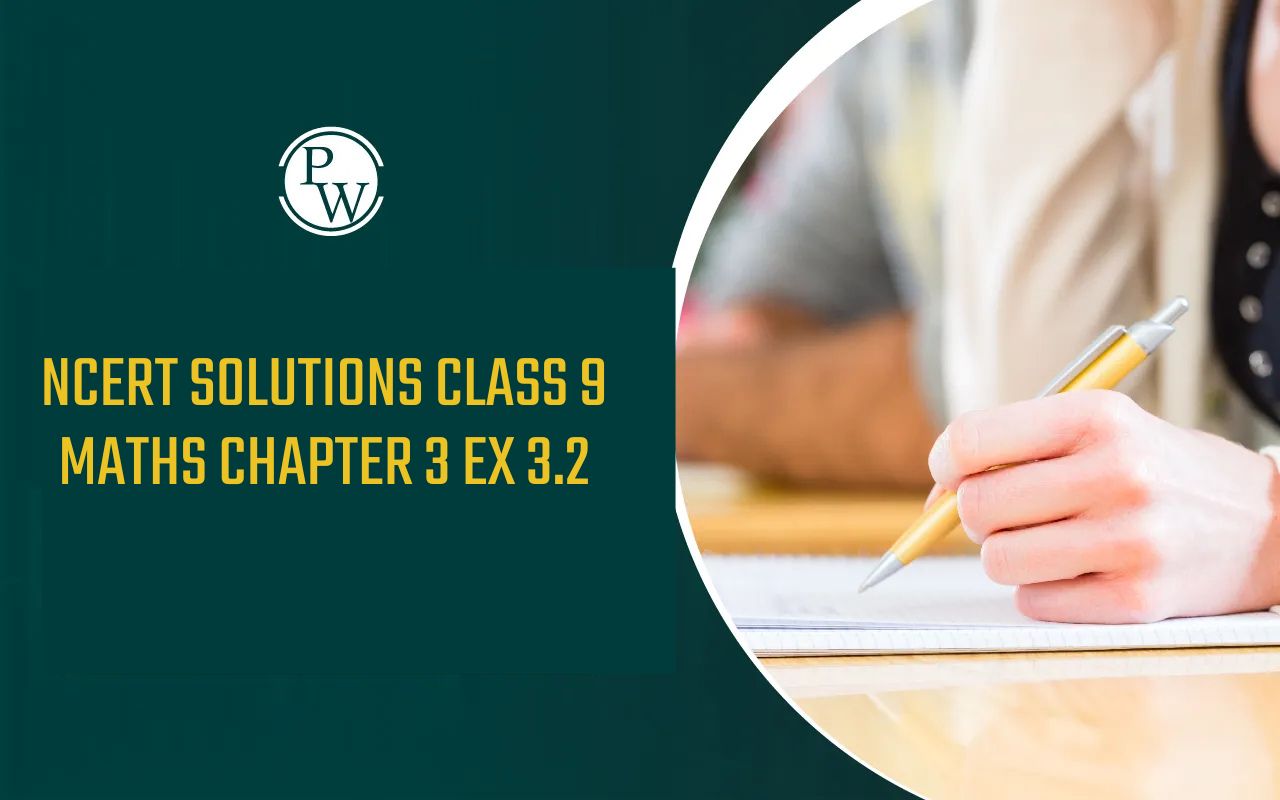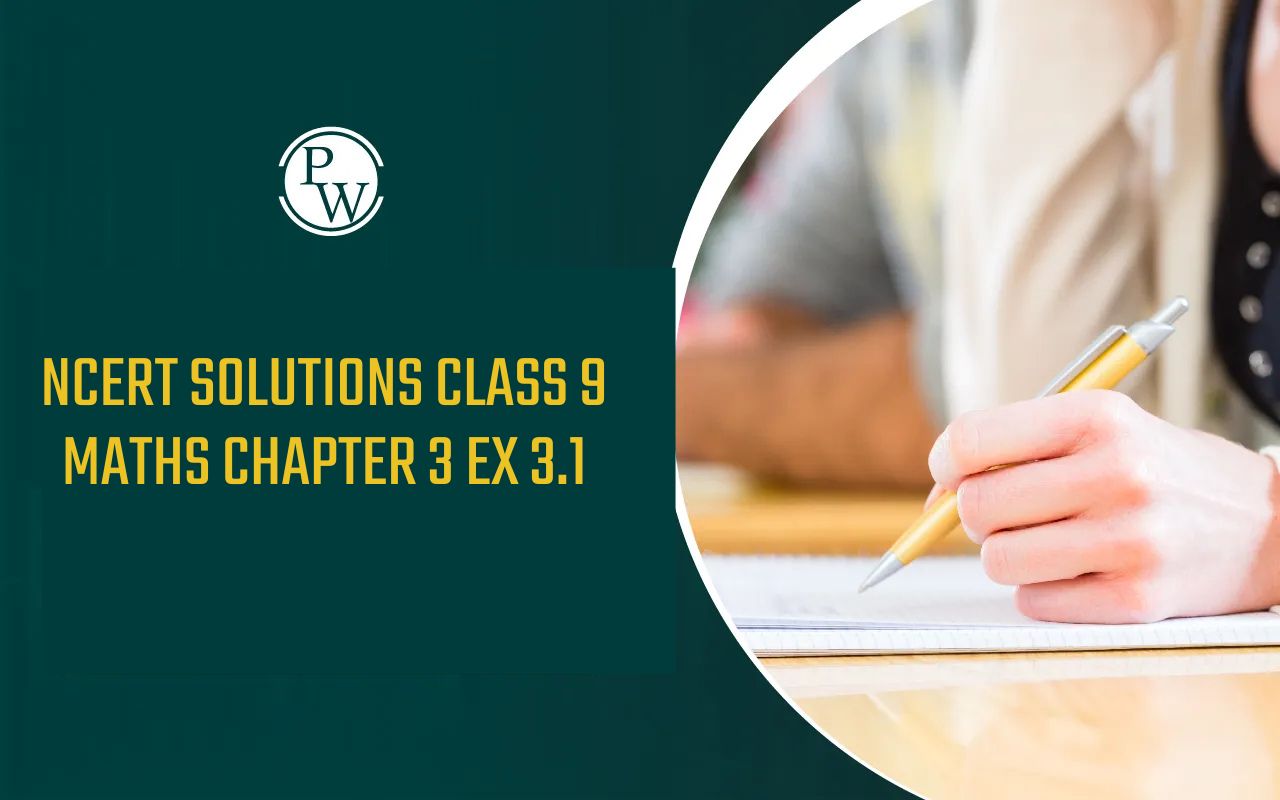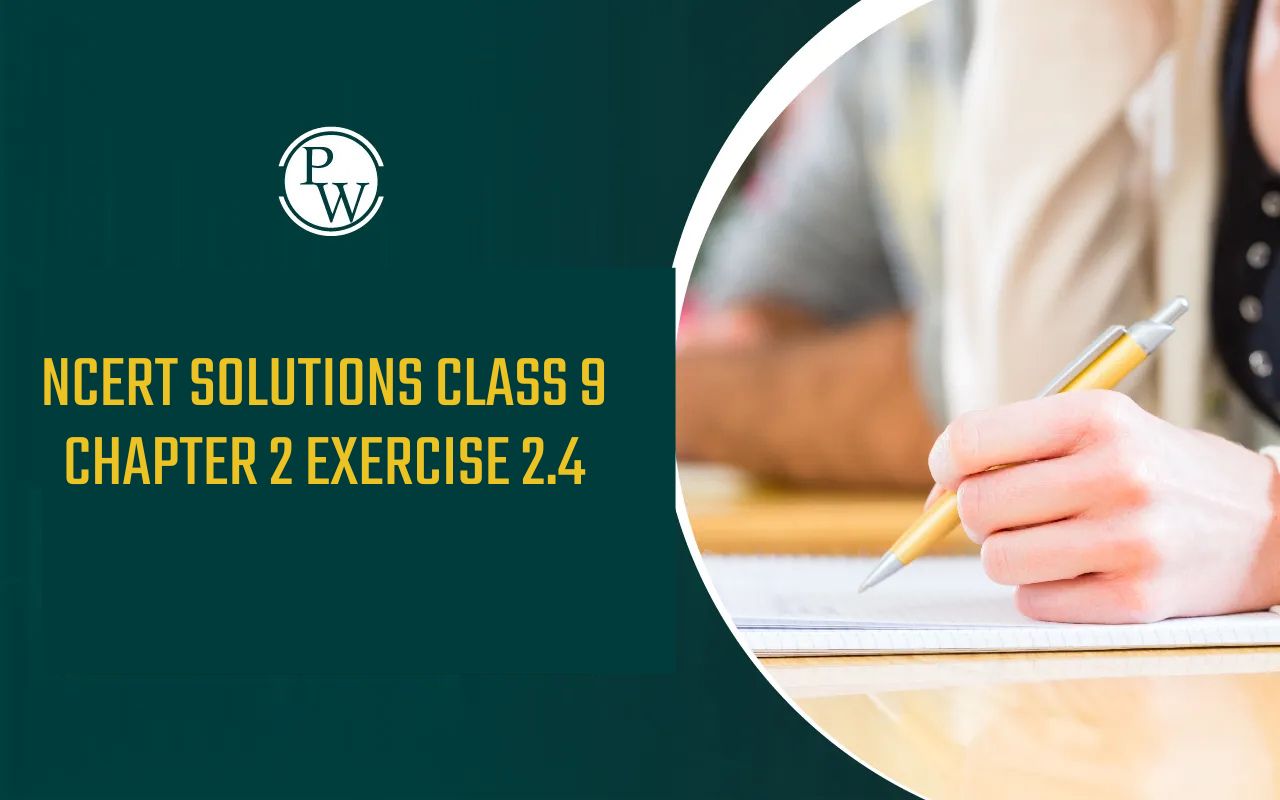

RD Sharma Solutions Class 9 Maths Chapter 21: Here are the RD Sharma Solutions for Class 9 Maths Chapter 21. This chapter focuses on Surface Area and Volume of a Sphere. The solutions provided here cover questions related to spheres and are incredibly useful for preparing for exams and competitions. Each solution is explained step by step to help students understand the concepts better and clear any doubts they may have.
Chapter 21 includes various exercises where students learn to calculate the surface area and volume of spheres. You can access the solutions by clicking on the links below, which will help you delve deeper into the concepts. In this chapter, students learn spheres, which are three-dimensional shapes resembling balls and consisting of points equidistant from a given point.CBSE Class 9 Science Syllabus 2024-25
You can access the PDF file for RD Sharma Solutions Class 9 Maths Chapter 21, which covers Surface Area and Volume of Sphere, by clicking the link provided below. This resource provide detailed explanations and step-by-step solutions to help you understand and solve problems related to spheres effectively.RD Sharma Solutions Class 9 Maths Chapter 21 PDF
RD Sharma Solutions Class 9 Maths Chapter 21 Surface Area and Volume of Sphere
Below, you will find the solutions for RD Sharma Class 9 Maths Chapter 21, which focuses on Surface Area and Volume of Sphere. These solutions provide comprehensive explanations and step-by-step answers to help you understand and solve problems related to spheres effectively. Read the solutions provided below to enhance your understanding and mastery of Surface Area and Volume of Sphere.CBSE Class 10 Result 2024 Expected To Be Out Soon
RD Sharma Solutions Class 9 Maths Chapter 21 Surface Area and Volume of Sphere Exercise 21.1 Page No: 21.8
Question 1: Find the surface area of a sphere of radius:
(i) 10.5 cm (ii) 5.6 cm (iii) 14 cm
Solution:
The surface area of a sphere = 4πr 2 Where, r = radius of a sphere(i) Radius = 10.5 cm
Surface area = 4 x 22/7 x (10.5) 2 = 1386 The surface area is 1386 cm 2(ii) Radius= 5.6 cm
Surface area = 4×22/7×(5.6) 2 = 394.24 The surface area is 394.24 cm 2(iii) Radius = 14 cm
Surface area = 4×22/7×(14) 2 = 2464 The surface area is 2464 cm 2Question 2: Find the surface area of a sphere of diameter:
(i) 14 cm (ii) 21 cm (iii) 3.5 cm
Solution:
The surface area of a sphere = 4πr 2 Where, r = radius of a sphere(i) Diameter= 14 cm
So, Radius = Diameter/2 = 14/2 cm = 7 cm Surface area = 4×22/7×(7) 2 = 616 The surface area is 616 cm 2(ii) Diameter = 21cm
So, Radius = Diameter/2 = 21/2 cm = 10.5 cm Surface area= 4×22/7×(10.5) 2 = 1386 The surface area is 1386 cm 2(iii) Diameter= 3.5cm
So, Radius = Diameter/2 = 3.5/2 cm = 1.75 cm Surface area = 4×22/7×(1.75) 2 = 38.5 The surface area is 38.5 cm 2Question 3: Find the total surface area of a hemisphere and a solid hemisphere, each of radius 10 cm. (π=3.14)
Solution:
Radius of a hemisphere = Radius of a solid hemisphere = 10 cm (Given) The surface area of the hemisphere = 2πr 2 = 2×3.14×(10) 2 cm 2 = 628 cm 2 And, the surface area of the solid hemisphere = 3πr 2 = 3×3.14×(10) 2 cm 2 = 942 cm 2Question 4: The surface area of a sphere is 5544 cm 2 , find its diameter.
Solution:
The surface area of a sphere is 5544 cm 2 The surface area of a sphere = 4πr 2 So, 4πr 2 = 5544 4×22/7×(r) 2 = 5544 r 2 = (5544 × 7)/88 r 2 = 441 or r = 21cm Now, Diameter=2(radius) = 2(21) = 42cmQuestion 5: A hemispherical bowl made of brass has an inner diameter 10.5 cm. Find the cost of tin plating it on the inside at the rate of Rs.4 per 100 cm 2 .
Solution:
The inner diameter of the hemispherical bowl = 10.5 cm So, radius = Diameter/2 = 10.5/2 cm = 5.25 cm Now, the surface area of the hemispherical bowl = 2πr 2 = 2 × 3.14 × (5.25) 2 = 173.25 So, the surface area of the hemispherical bowl is 173.25 cm 2 Find the cost: Cost of tin plating 100 cm 2 area= Rs.4 (given) Cost of tin plating 173.25cm 2 area = Rs. 4×173.25100 = Rs. 6.93 Therefore, the cost of tin plating the inner side of the hemispherical bowl is Rs. 6.93.Question 6: The dome of a building is in the form of a hemisphere. Its radius is 63 dm. Find the cost of painting it at the rate of Rs. 2 per sq m.
Solution:
The radius of hemispherical dome = 63 dm or 6.3 m The inner surface area of dome = 2πr 2 =2×3.14×(6.3) 2 = 249.48 So, the inner surface area of the dome is 249.48 m 2 Now find the cost: Cost of painting 1m 2 = Rs.2 (given) Therefore, the cost of painting 249.48 m 2 = Rs. (249.48×2) = Rs.498.96.RD Sharma Solutions Class 9 Maths Chapter 21 Surface Area and Volume of Sphere Exercise 21.2 Page No: 21.19
Question 1: Find the volume of a sphere whose radius is:
(i) 2 cm (ii) 3.5 cm (iii) 10.5 cm.
Solution:
The volume of a sphere = 4/3πr 3 Cubic Units Where, r = radius of a sphere(i) Radius = 2 cm
Volume = 4/3 × 22/7 × (2) 3 = 33.52 Volume = 33.52 cm 3(ii) Radius = 3.5cm
Therefore volume = 4/3×22/7×(3.5) 3 = 179.666 Volume = 179.666 cm 3(iii) Radius = 10.5 cm
Volume = 4/3×22/7×(10.5) 3 = 4851 Volume = 4851 cm 3Question 2: Find the volume of a sphere whose diameter is:
(i) 14 cm (ii) 3.5 dm (iii) 2.1 m
Solution:
The volume of a sphere = 4/3πr 3 Cubic Units Where, r = radius of a sphere(i) diameter =14 cm
So, radius = diameter/2 = 14/2 = 7cm Volume = 4/3×22/7×(7) 3 = 1437.33 Volume = 1437.33 cm 3(ii) diameter = 3.5 dm
So, radius = diameter/2 = 3.5/2 = 1.75 dm Volume = 4/3×22/7×(1.75) 3 = 22.46 Volume = 22.46 dm 3(iii) diameter = 2.1 m
So, radius = diameter/2 = 2.1/2 = 1.05 m Volume = 4/3×22/7×(1.05) 3 = 4.851 Volume = 4.851 m 3Question 3: A hemispherical tank has an inner radius of 2.8 m. Find its capacity in litres.
Solution:
The radius of hemispherical tank = 2.8 m Capacity of hemispherical tank = 2/3 πr 3 =2/3×22/7×(2.8) 3 m 3 = 45.997 m 3 [Using 1m 3 = 1000 liters] Therefore, capacity in litres = 45997 litresQuestion 4: A hemispherical bowl is made of steel 0.25 cm thick. The inside radius of the bowl is 5 cm. Find the volume of steel used in making the bowl.
Solution:
The inner radius of a hemispherical bowl = 5 cm Outer radius of a hemispherical bowl = 5 cm + 0.25 cm = 5.25 cm The volume of steel used = Outer volume – Inner volume = 2/3×π×((5.25) 3 −(5) 3 ) = 2/3×22/7×((5.25) 3 −(5) 3 ) = 41.282 The volume of steel used is 41.282 cm 3Question 5: How many bullets can be made out of a cube of lead, whose edge measures 22 cm, each bullet being 2 cm in diameter?
Solution:
Edge of a cube = 22 cm Diameter of bullet = 2 cm So, the radius of the bullet (r) = 1 cm Volume of the cube = (side) 3 = (22) 3 cm 3 = 10648 cm 3 And, The volume of each bullet which will be spherical in shape = 4/3πr 3 = 4/3 × 22/7 × (1) 3 cm 3 = 4/3 × 22/7 cm 3 = 88/21 cm 3 Number of bullets = (Volume of cube) / (Volume of bullet) = 10648/88/21 = 2541 Therefore, 2541 bullets can be made.Question 6: A shopkeeper has one laddoo of radius 5 cm. With the same material, how many laddoos of radius 2.5 cm can be made?
Solution:
The volume of laddoo having a radius of 5 cm (V1) = 4/3×22/7×(5) 3 = 11000/21 cm 3 Also, the volume of the laddoo having a radius of 2.5 cm (V2) = 4/3πr 3 = 4/3×22/7×(2.5) 3 cm 3 = 1375/21 cm 3 Therefore, Number of laddoos of radius 2.5 cm that can be made = V1/V2 = 11000/1375 = 8Question 7: A spherical ball of lead 3 cm in diameter is melted and recast into three spherical balls. If the diameters of two balls be 3/2cm and 2 cm, find the diameter of the third ball.
Solution:
The volume of the lead ball with a radius of 3/2 cm = 4/3πr 3 = 4/3×π×(3/2) 3 Let, Diameter of the first ball (d1) = 3/2cm The radius of the first ball (r1) = 3/4 cm Diameter of the second ball (d2) = 2 cm Radius of second ball (r2) = 2/2 cm = 1 cm Diameter of the third ball (d3) = d The radius of the third ball (r3) = d/2 cm Now, So, the diameter of the third ball is 2.5 cm.
So, the diameter of the third ball is 2.5 cm.
Question 8: A sphere of radius 5 cm is immersed in water filled in a cylinder, and the level of water rises 5/3 cm. Find the radius of the cylinder.
Solution:
Radius of sphere = 5 cm (Given) Let ‘r’ be the radius of the cylinder. We know, the volume of the sphere = 4/3πr 3 By putting values, we get = 4/3×π×(5) 3 The height (h) of water rise is 5/3 cm (Given) The volume of water rise in the cylinder = πr 2 h Therefore, the volume of water rise in the cylinder = Volume of the sphere So, πr 2 h = 4/3πr 3 π r 2 × 5/3 = 4/3 × π × (5) 3 or r 2 = 100 or r = 10 Therefore, the radius of the cylinder is 10 cm.Question 9: If the radius of a sphere is doubled, what is the ratio of the volume of the first sphere to that of the second sphere?
Solution:
Let r be the radius of the first sphere, then 2r be the radius of the second sphere. Now, The ratio of the volume of the first sphere to the second sphere is 1:8.
The ratio of the volume of the first sphere to the second sphere is 1:8.
Question 10: A cone and a hemisphere have equal bases and equal volumes. Find the ratio of their heights.
Solution:
The volume of the cone = Volume of the hemisphere (Given) 1/3πr 2 h = 2/3 πr 3 (Using respective formulas) r 2 h = 2r 3 or h = 2r Since a cone and a hemisphere have equal bases, it implies they have the same radius. h/r = 2 or h : r = 2 : 1 Therefore, the ratio of their heights is 2:1Question 11: A vessel in the form of a hemispherical bowl is full of water. Its contents are emptied in a right circular cylinder. The internal radii of the bowl and the cylinder are 3.5 cm and 7 cm, respectively. Find the height to which the water will rise in the cylinder.
Solution:
The volume of water in the hemispherical bowl = Volume of water in the cylinder … (Given) The inner radius of the bowl ( r 1 ) = 3.5cm The inner radius of cylinder (r 2 ) = 7cm The volume of water in the hemispherical bowl = Volume of water in the cylinder 2/3πr 1 3 = πr 2 2 h [Using respective formulas] Where h is the height to which water rises in the cylinder. 2/3π(3.5) 3 = π(7) 2 h or h = 7/12 Therefore, 7/12 cm is the height to which water rises in the cylinder.Question 12: A cylinder whose height is two thirds of its diameter, has the same volume as a sphere of radius 4 cm. Calculate the radius of the base of the cylinder.
Solution:
Radius of a sphere (R)= 4 cm (Given) Height of the cylinder = 2/3 diameter (given) We know, Diameter = 2(Radius) Let h be the height and r be the base radius of a cylinder, then h = 2/3× (2r) = 4r/3 The volume of the cylinder = Volume of the sphere πr 2 h = 4/3πR 3 π × r 2 × (4r/3) = 4/3 π (4) 3 (r) 3 = (4) 3 or r = 4 Therefore, the radius of the base of the cylinder is 4 cm.Question 13: A vessel in the form of a hemispherical bowl is full of water. The contents are emptied into a cylinder. The internal radii of the bowl and cylinder are respectively 6 cm and 4 cm. Find the height of water in the cylinder.
Solution:
Radius of a bowl (R)= 6 cm (Given) Radius of a cylinder (r) = 4 cm (given) Let h be the height of a cylinder. Now, The volume of water in the hemispherical bowl = Volume of the cylinder 2/3 π R 3 = πr 2 h 2/3 π (6) 3 = π(4) 2 h or h = 9 Therefore, the height of the water in the cylinder is 9 cm.Question 14: A cylindrical tub of radius 16 cm contains water to a depth of 30 cm. A spherical iron ball is dropped into the tub, and thus the level of water is raised by 9 cm. What is the radius of the ball?
Solution:
Let r be the radius of the iron ball. Radius of the cylinder (R) = 16 cm (Given) A spherical iron ball is dropped into the cylinder, and thus the level of water is raised by 9 cm. So, height (h) = 9 cm From statement, The volume of iron ball = Volume of water raised in the hub 4/3πr 3 = πR 2 h 4/3 r 3 = (16) 2 × 9 or r 3 = 1728 or r = 12 Therefore, radius of the ball = 12cm.RD Sharma Solutions Class 9 Maths Chapter 21 Surface Area and Volume of Sphere Exercise VSAQs Page No: 21.25
Question 1: Find the surface area of a sphere of radius 14 cm.
Solution:
The radius of a sphere (r) = 14 cm The surface area of a sphere = 4πr 2 = 4 × (22/7) × 14 2 cm 2 = 2464 cm 2Question 2: Find the total surface area of a hemisphere of radius 10 cm.
Solution:
The radius of a hemisphere (r) = 10 cm The total surface area of a hemisphere = 3πr 2 = 3 × (22/7) × 10 2 cm 2 = 942 cm 2Question 3: Find the radius of a sphere whose surface area is 154 cm 2 .
Solution:
The surface area of a sphere = 154 cm 2 We know, Surface area of a sphere = 4πr 2 So, 4πr 2 = 154 4 x 22/7 x r 2 = 154 r 2 = 49/4 or r = 7/2 = 3.5 The radius of a sphere is 3.5 cm.Question 4: The hollow sphere, in which the circus motorcyclist performs his stunts, has a diameter of 7 m. Find the area available to the motorcyclist for riding.
Solution:
Diameter of hollow sphere = 7 m So, radius of hollow sphere = 7/2 m = 3.5 cm Now, The area available to the motorcyclist for riding = Surface area of a sphere = 4πr 2 = 4 × (22/7) × 3.5 2 m 2 = 154 m 2Question 5: Find the volume of a sphere whose surface area is 154 cm 2 .
Solution:
The surface area of a sphere = 154 cm 2 We know, Surface area of a sphere = 4πr 2 So, 4πr 2 = 154 4 x 22/7 x r 2 = 154 or r 2 = 49/4 or r = 7/2 = 3.5 Radius (r) = 3.5 cm Now, Volume of sphere = 4/3 π r 3 = (4/3) π × 3.5 3 = 179.66 Therefore, the volume of the sphere is 179.66 cm 3 .| CBSE Class 9 Maths Syllabus | CBSE Class 9 Science Syllabus |
| CBSE Class 9 Computer Application Syllabus | CBSE Class 9 Social Science Syllabus |
RD Sharma Solutions Class 9 Maths Chapter 21 FAQs
What topics are covered in RD Sharma Solutions Class 9 Maths Chapter 21?
Are the solutions provided in RD Sharma Solutions Class 9 Maths Chapter 21 accurate?
How can RD Sharma Solutions Class 9 Maths Chapter 21 help me prepare for exams?












